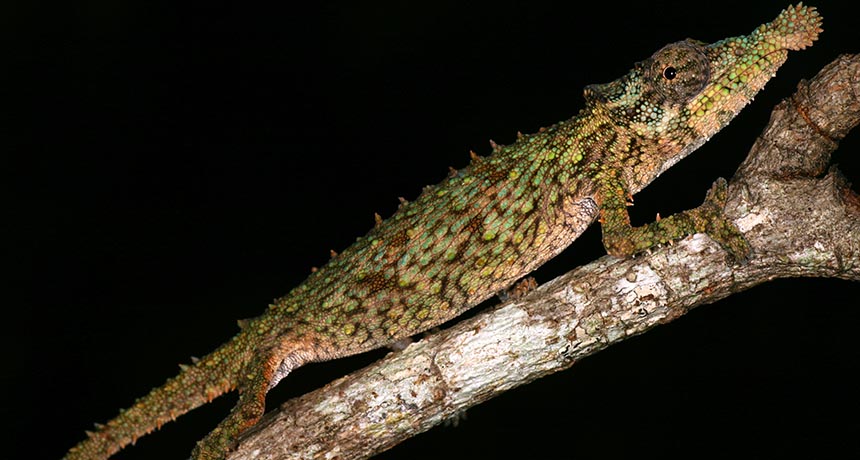Small lizard packs powerful tongue

Like other chameleons, Rhampholeon spinosus (shown) probably achieves such astounding power and acceleration of its tongue by contracting muscles and thereby loading them with potential energy like a catapult.
Christopher V. Anderson







